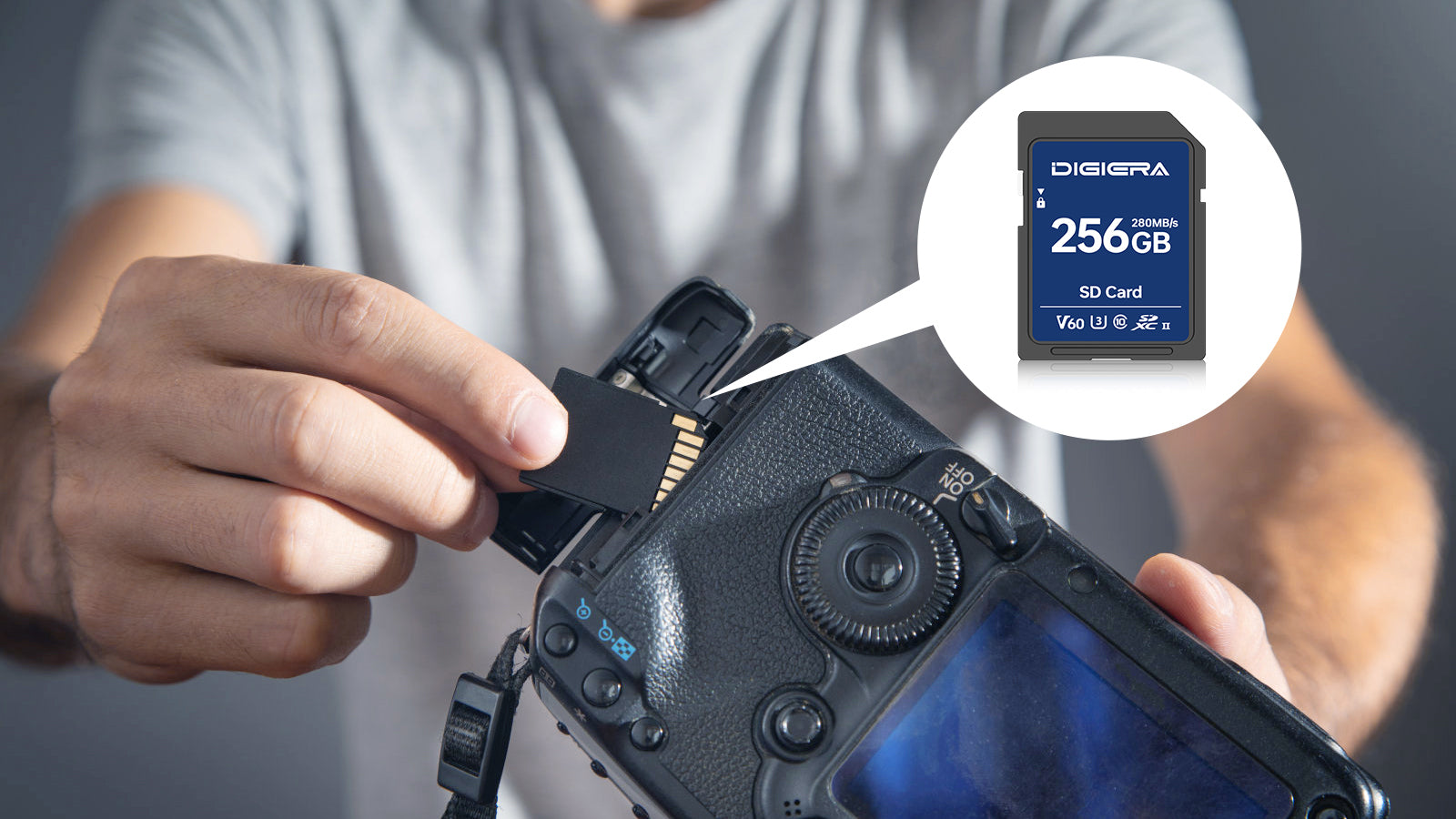If you're shopping for a new memory card, you've probably come across the terms UHS-I and UHS-II. These two SD card formats might look similar, but they offer dramatically different data transfer speeds, video speed classes, and device compatibility. In this comprehensive guide, we’ll break down everything you need to know about UHS-I vs UHS-II and help you decide which one suits your storage needs best.
Understanding the UHS Bus Interface
UHS stands for Ultra High Speed, a bus interface developed by the SD Association to boost read/write speeds in SD and microSD cards. The primary difference between UHS-I and UHS-II lies in their physical architecture and speed capabilities:
-
UHS-I cards have one row of pins and offer maximum theoretical transfer speeds of up to 104MB/s.
-
UHS-II cards feature two rows of pins, allowing for transfer speeds up to 312MB/s.
This means that UHS-II SD cards are built to deliver significantly faster data transfer rates, especially useful for content creators, videographers, and professionals capturing high resolution videos.

Key Differences Between UHS-I and UHS-II
Let’s dive deeper into how UHS-I and UHS-II differ across multiple dimensions.
1. Speed and Performance
-
UHS-I Cards: Up to 104MB/s read/write speeds. Suitable for full HD video, burst mode photography, and general use.
-
UHS-II Cards: Up to 312MB/s transfer speeds. Ideal for 4K/8K video recording, high resolution image capture, and handling multiple video streams.
UHS-II cards also support sustained write speeds that meet demanding video speed class ratings such as V60 or V90.
2. Physical Design
The bus interface is the defining physical feature:
-
UHS-I: One row of gold pins.
-
UHS-II: Two rows of pins (the second row enables additional lanes for faster communication).
Some integrated UHS-II devices can fully leverage this second row, allowing for enhanced speeds and better performance under heavy workloads.
3. Device Compatibility
-
UHS-I cards are supported by nearly all modern devices.
-
UHS-II cards are backward compatible with UHS-I devices but will operate at UHS-I speeds if the second row of pins isn’t recognized.
To benefit from UHS-II, your camera, video camera, card reader, or Type-C device must support UHS-II.

Who Should Use UHS-I?
UHS-I cards are excellent for:
-
Everyday use in smartphones, dashcams, and compact cameras.
-
Recording 1080p video or capturing images in JPEG format.
-
Users who don’t need ultra-fast transfer speeds.
They are more affordable and widely supported, making them perfect for casual users.
Who Should Use UHS-II?
UHS-II SD cards are designed for:
-
Professional photographers shooting in RAW or burst mode.
-
Videographers recording in 4K, 6K, or 8K resolution.
-
Drone operators, GoPro users, and content creators.
-
People working with large video files and high-speed workflows.
If you’re using a UHS-II card reader, MacBook, or iMac Pro with Type-C, you’ll unlock the full potential of UHS-II’s faster speeds.
UHS-II microSD Cards: Are They a Thing?
Yes, UHS-II microSD cards exist and are ideal for high-performance smartphones, action cameras, and gaming devices. They’re rarer than full-size SD cards, but brands like Lexar and SanDisk offer UHS-II microSD options.
Make sure to use a Type-C card reader that supports UHS-II to get the benefits of the upgraded speeds.
How to Identify UHS-I and UHS-II Cards
Look for these indicators:
-
UHS-I: Marked with a Roman numeral "I" and usually has a U1 or U3 symbol.
-
UHS-II: Marked with a Roman numeral "II", often paired with V60, V90, or other video speed class symbols.
-
Visually, UHS-II cards have two rows of pins on the back.
Real-World Test: Speed Comparison
In real-world testing, a UHS-II SD card delivered up to 290MB/s read and 260MB/s write speed using a compatible reader. Meanwhile, a UHS-I card maxed out at about 90MB/s read and 75MB/s write.
These results show that for professionals working with high resolution images or extended videos, UHS-II is well worth the investment.
Cost Considerations
-
UHS-I cards are cheaper and come in a wide variety of capacities and brands.
-
UHS-II cards are more expensive due to their two-lane interface and faster controller tech.
But if you’re working under time-sensitive conditions, like wedding shoots, commercial production, or sports events, the time saved in file transfers can justify the cost.
Final Thoughts: Which Should You Buy?
| Criteria | UHS-I | UHS-II |
|---|---|---|
| Speed | Up to 104MB/s | Up to 312MB/s |
| Use Case | General use, HD video | 4K/8K video, RAW burst photos |
| Compatibility | Nearly all devices | Requires UHS-II compatible device |
| Price | Affordable | Premium |
If your workflow includes high-res videos, faster data transfers, or frequent backups, then UHS-II is the clear choice. But for casual users, UHS-I cards offer a solid balance of performance and price.
Whichever you choose, always pair your card with the right card readers and support devices to achieve the best results.
Need help choosing the right SD or microSD card for your setup? Check out our latest reviews on the best UHS-II SD cards for 2025.

